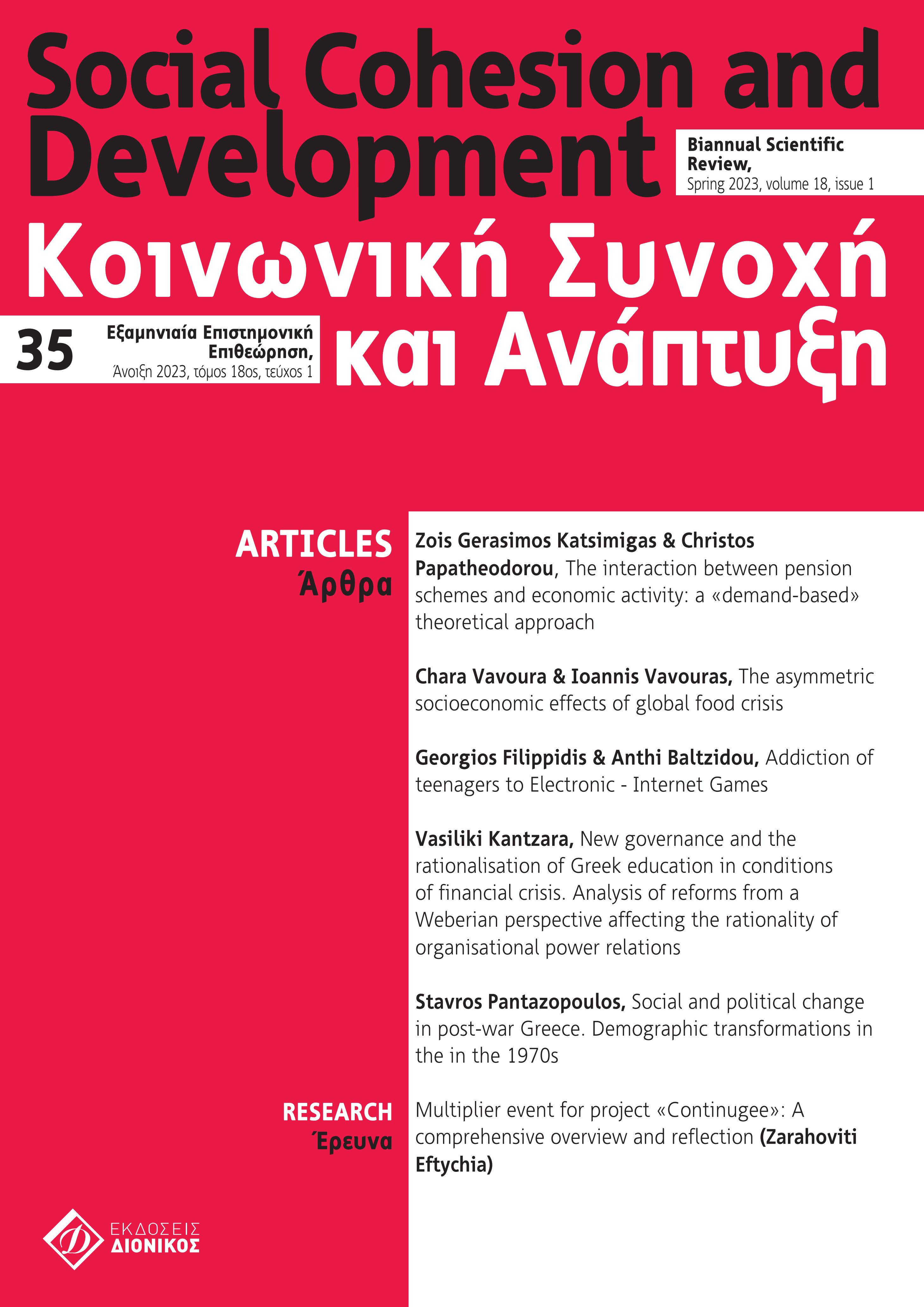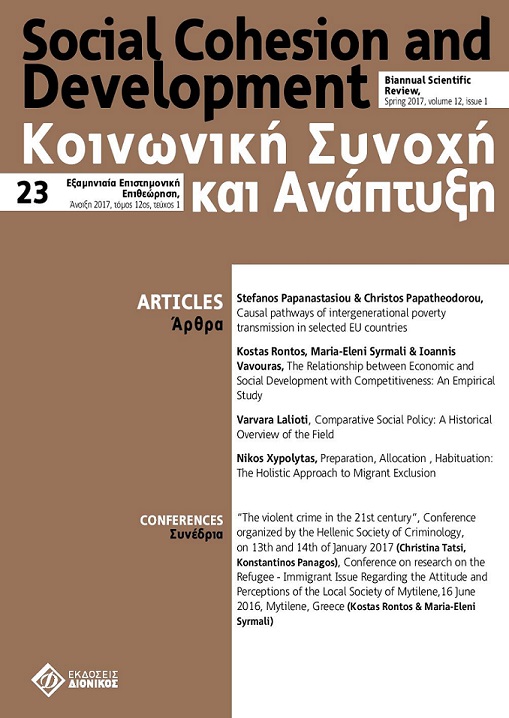The interaction between pension schemes and economic activity: a «demand-based» theoretical approach

Abstract
Motivated by the recent capitalization of the auxiliary pension and the demographic projections of ageing and population decline in the coming decades in Greece, we will identify and examine the determinants of the pensions of the two social security schemes (PayAs-You-Go & Fully Funded), their relationship with the functional distribution of income, as well as their interaction with economic activity. The aim is to highlight the importance of examining pension systems in relation to the macroeconomic environment in order to clarify the impact of both demographic changes and fiscal policies to reduce the pension system dependency ratio, and the state contribution to pensions on economic activity and
public debt.
Article Details
- How to Cite
-
Katsimigas, Z. G., & Papatheodorou , C. (2024). The interaction between pension schemes and economic activity: a «demand-based» theoretical approach . Social Cohesion and Development, 18(1), 5–20. https://doi.org/10.12681/scad.37297 (Original work published June 30, 2023)
- Section
- Articles

This work is licensed under a Creative Commons Attribution-NonCommercial-ShareAlike 4.0 International License.
Authors who publish with this journal agree to the following terms:
- Authors retain copyright and grant the journal right of first publication with the work simultaneously licensed under a Creative Commons Attribution Non-Commercial License that allows others to share the work with an acknowledgement of the work's authorship and initial publication in this journal.
- Authors are able to enter into separate, additional contractual arrangements for the non-exclusive distribution of the journal's published version of the work (e.g. post it to an institutional repository or publish it in a book), with an acknowledgement of its initial publication in this journal.
- Authors are permitted and encouraged to post their work online (preferably in institutional repositories or on their website) prior to and during the submission process, as it can lead to productive exchanges, as well as earlier and greater citation of published work (See The Effect of Open Access).



